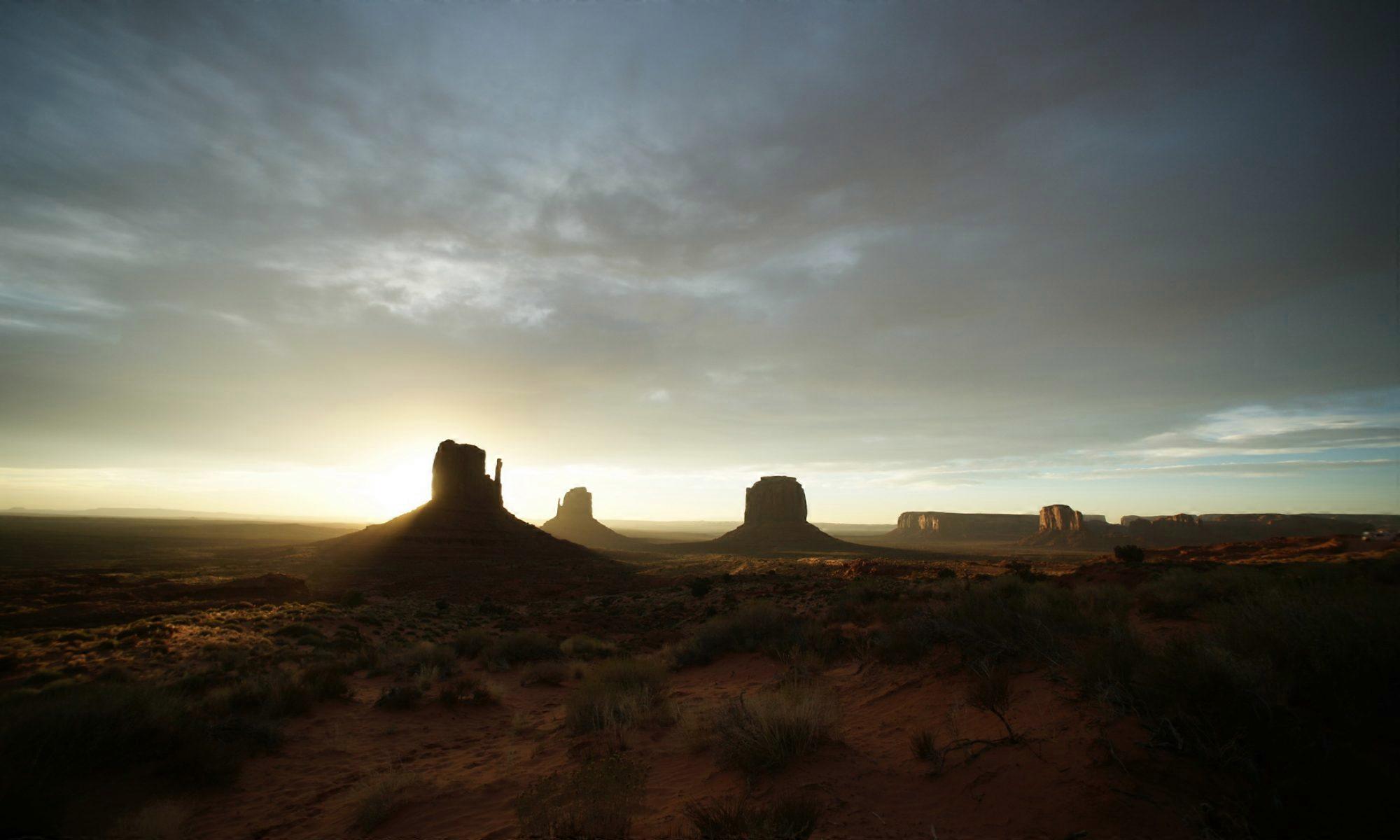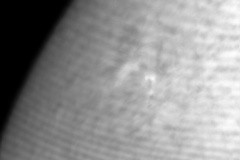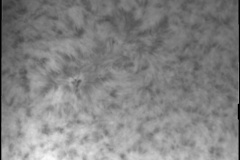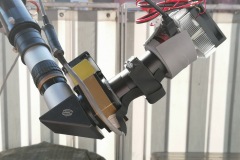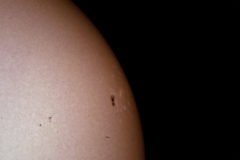Last night I could capture a few light frames of M27. The 3 individual small narrow filtered images were combined in Hubble-Palette colorization
Tilt Adapter for narrow band solar imaging
Imaging with narrow band H-alpha filters for solar imaging (prominences and chromosphere) requires the light beam to be almost parallel before entering the special interference filter called Etalon filter. This is achieved by i.e. telecentric systems, also extending the focal length by a factor of 2-4x. The sensor protection glass and anti-reflection glass of the camera create reflections with each other and the filter surface. Due to the parallel light beam, these reflections create interference patterns, noticable as so called Newton’s rings in the image. It depends on several different factors like sensor construction (micro lenses, …), exact angle of sensor in optical path, angle between sensor and filter / protection glass, … how strong the Newton’s rings influence the resulting images.
It is possible to reduce or eliminate this in post processing. But any minor shift in the imaging train will make it almost impossible to compensate with flat-field images.
Fortunately, there is one alternative option: tilting the camera by a few degrees (usually up to 5 degrees), to widen the distance of the Newton’s rings, where they are no longer disturbing.
As these tilt adapters have a quite steep price tag, I constructed and printed one myself. I had to create several versions, until I had achieved a proper stability as well as stray light protection. But finally, I have a working tool 🙂
If you are interested in the design, you find the 3D files and description here: https://www.thingiverse.com/thing:4301757
See how much the tilt changes the resulting image!
Hints to the images:
– The blurry look in the image with Newton’s rings results from the alignment algorithm locking on the Newton’s rings instead of surface features
– the adapter attached to the filter is a prototype without stray light protection. Hence a strip of black insulation tape was used for shade
3 hour Solar prominence timelapse 2020-04-12
This prominence occured right after the sunspot region 12579 vanished and rotated out of view. The video shows the development from 09:02:25-12:15:05 UTC+2.
Video recorded with 715mm f/7 refractor with 4x telecentric system and SolarSpectrum 0.5A filter on ZWO120MM-S camera. Sequence consists of 490 images. Each image is a stack of 500 frames each. (For the complete sequence, 245.000 images have been processed)
Solar prominence timelapse
I had the chance to borrow a Hydrogen alpha filter for solar observation. As the weather was just perfect, I set up my 80/600 refractor with the filter and a camera attached. Every 15 seconds I captured 400 frames for later processing. After 4 hours, my hard disk was loaded with 850GB of data…
Now, more than 2 days of stacking, aligning, optimizing, … are over. The resulting image sequence is simply fascinating and beautiful:
Horsehead Nebula in H-alpha across the city
I had a bit of time to experiment with an H-alpha filter at home. Conditions are limiting astro-imaging as my balcony faces south. Living in the northern outskirts of a city, all the sky visible is significantly affected by city lights. This night, the sky was somewhat OK, reaching up to 18.7 to 19.5 mag/arcsec².
Using narrow band filters, like an H-alpha filter, the majority of the city lights may be cut away. This image (not perfectly focussed) shows, what is possible. It is a result of 12x240s, captured at ISO800 with my modified Sony A6000…
Sun in H-alpha light with deep sky filter
I questioned myself whether it would be possible to enhance images of the sun using deep sky H-alpha filters. Most likely a filter with 7nm bandwidth would not show prominences. Prominences are so dim, that the rather wide bandwith of the deep sky filter passes too much of bright light to see them. Keep in mind, that typical solar H-alpha filters are in the range of 0.3-1.5 Angstrom, which is 100 times more narrow than the deep sky filter (7nm = 70 Angstrom).
But who knows – perhaps the granulation becomes visible or at least the surface texture may improve…
ATTENTION: Never ever look direct at the sun! You risk your eye-sight, especially through optical instruments without proper equippment! I use specialized filters, suitable for solar work
I think, the result speaks for itself! It is an significant improvement, as the surface texture is no longer flat!
